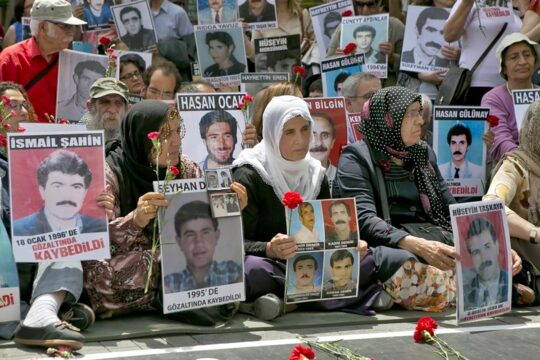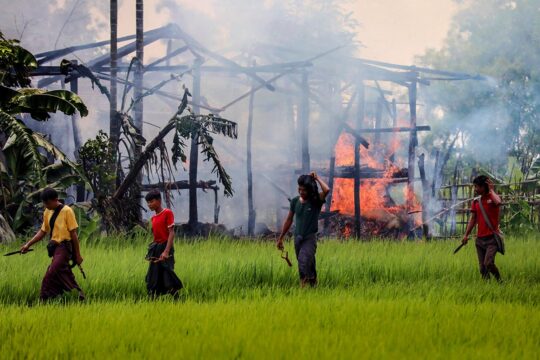German lawmakers vote Thursday on a resolution branding the massacre of Armenians by Ottoman forces a genocide, drawing angry warnings from Turkey that it could harm relations.
Here are the key facts and background on the 1915-1917 massacres and deportations, the focus of the longstanding Turkish-Armenian diplomatic standoff:
- Historical background -
Following centuries of alternating Ottoman and Persian rule, Armenians by the mid-19th century lived across the Russian and Ottoman empires.
Between 1.7 and 2.3 million Armenians were living in eastern provinces of the Ottoman Empire by 1915, according to estimates of Western scholars.
Ottoman authorities had been suspicious about the loyalty of Armenian subjects since the late 19th century when a nationalist movement gained momentum, seeking autonomy from Ottoman rule.
An estimated 100,000 to 300,000 Armenians are thought to have been killed in 1895-1896 in the so-called Hamidian massacres under sultan Abdul Hamid II. In 1905 he narrowly escaped an Armenian attempt to assassinate him with a bomb.
In 1914, the Ottoman Empire entered World War I on the side of Germany and Austria-Hungary.
As major battles erupted in Armenian-inhabited provinces, the Ottoman authorities unleashed a propaganda campaign portraying Armenians as an "enemy within".
On April 24, 1915, hundreds of Armenian community leaders and intellectuals suspected of being hostile to the Ottoman government were rounded up in Constantinople, present-day Istanbul.
Most of them were later executed or deported.
April 24 is commemorated by Armenians as Genocide Remembrance Day.
- Chain of events -
Following two laws authorising deportation of Armenians and confiscation of their property, hundreds of thousands were marched into a desert in present-day Syria. Those who survived were put into 25 concentration camps.
Armenians were subjected to mass shooting, burning and poisoning, according to accounts by foreign diplomats and intelligence agents at the time.
On October 30, 1918, the Ottoman Empire surrendered to the Allied powers -- Britain, Russia and France. The armistice agreement provided for the return of Armenian deportees to their homes.
In February 1919, a court-martial in Constantinople found a number of top Ottoman officials guilty of war crimes, including against Armenians, and sentenced them to death, though failed to prosecute those who had fled the country.
- Conflicting versions -
Armenia says up to 1.5 million people were killed between 1915 and 1917 and has long pushed for international recognition of the killings as genocide.
Turkey, the successor state of the Ottoman Empire, accepts that massacres and deportations were carried out but describes the bloodshed as an internecine conflict.
Ankara argues that 300,000 to 500,000 Armenians and at least as many Turks died in civil strife when Armenians rose up against their Ottoman rulers and sided with invading Russian troops.
In April 2014, Turkey's President Recep Tayyip Erdogan for the first time offered his condolences over the massacres, calling them "our shared pain".
Yerevan dismissed the statement.
- Historical evidence -
The massacres were abundantly documented in numerous official records and accounts of eyewitnesses, including by foreign diplomats.
Describing the bloodshed in a July 1915 cable to the Department of State, the US ambassador Henry Morgenthau said: "A campaign of race extermination is in progress under a pretext of reprisal against rebellion".
Polish lawyer Raphael Lemkin, who in the 1940s coined the word genocide, cited the massacres as a defining example of the term's meaning.
In 2000, 126 scholars -- including Nobel Prize-winner Elie Wiesel, historian Yehuda Bauer, and sociologist Irving Horowitz -- published a statement in The New York Times, affirming that "the World War I Armenian genocide is an incontestable historical fact".
- 'Intent to destroy' -
The 1948 UN Genocide Convention defines the crime as acts "committed with intent to destroy, in whole or part, a national, ethnical, racial or religious group".
Yerevan says that the Armenian massacres are today recognised as genocide by more than 20 countries, including France and Russia, as well as the European Parliament and the Council of Europe.
US President Barack Obama had pledged in his campaign that he "will recognise the Armenian genocide" if elected, but has thus far avoided using the politically charged term, stressing however that his "view of that history has not changed".





